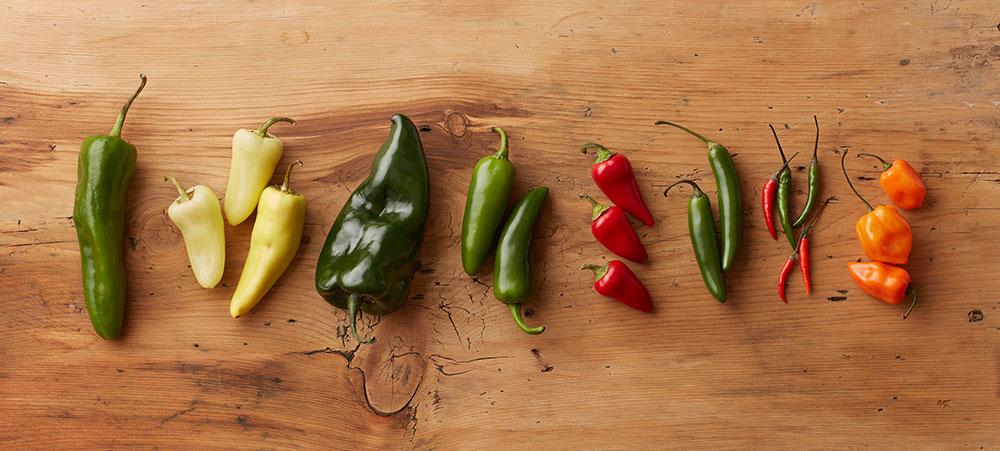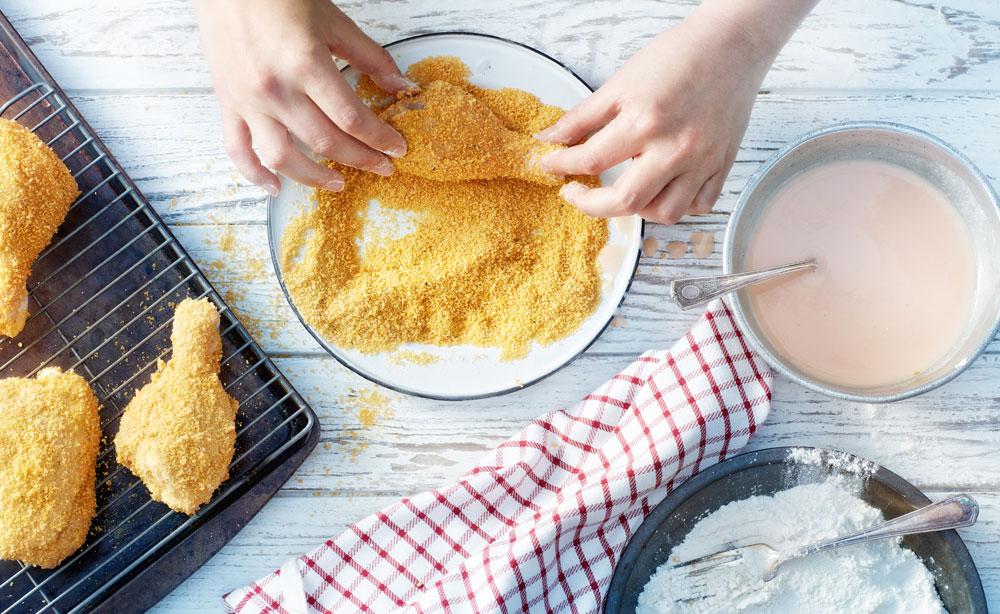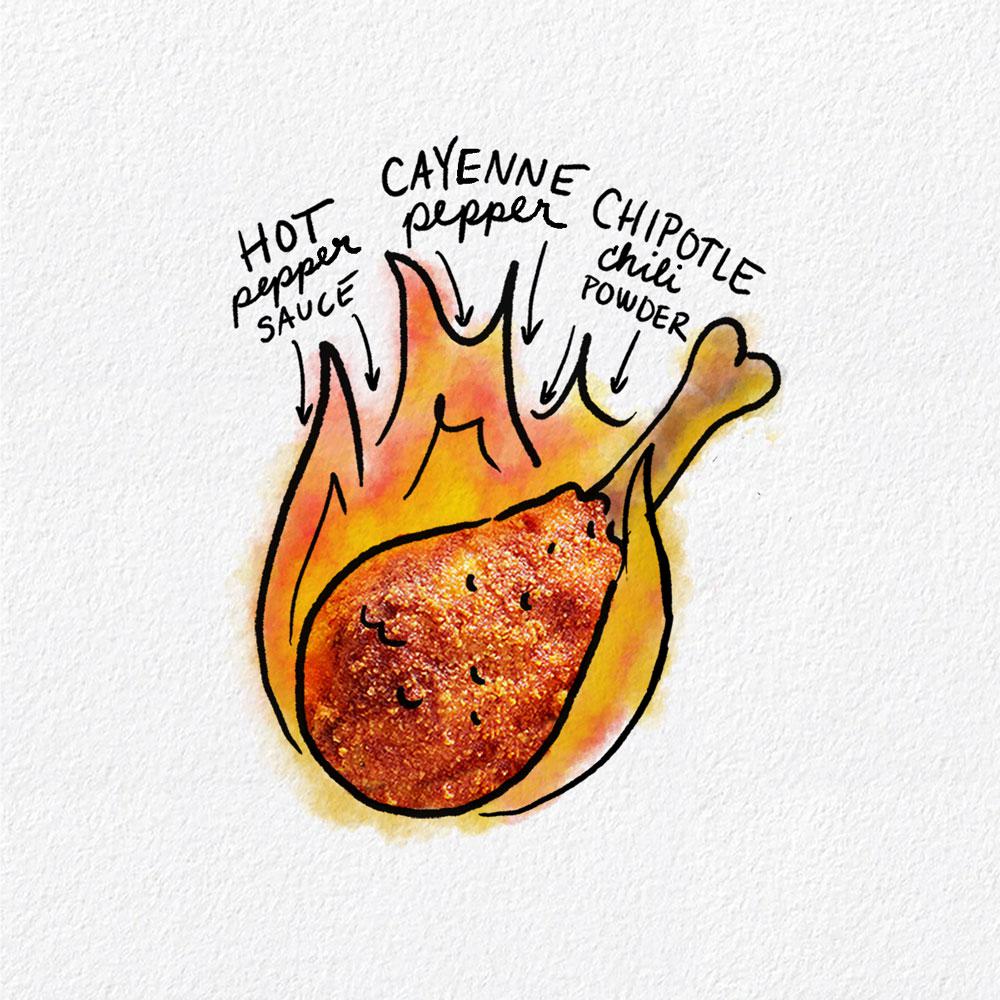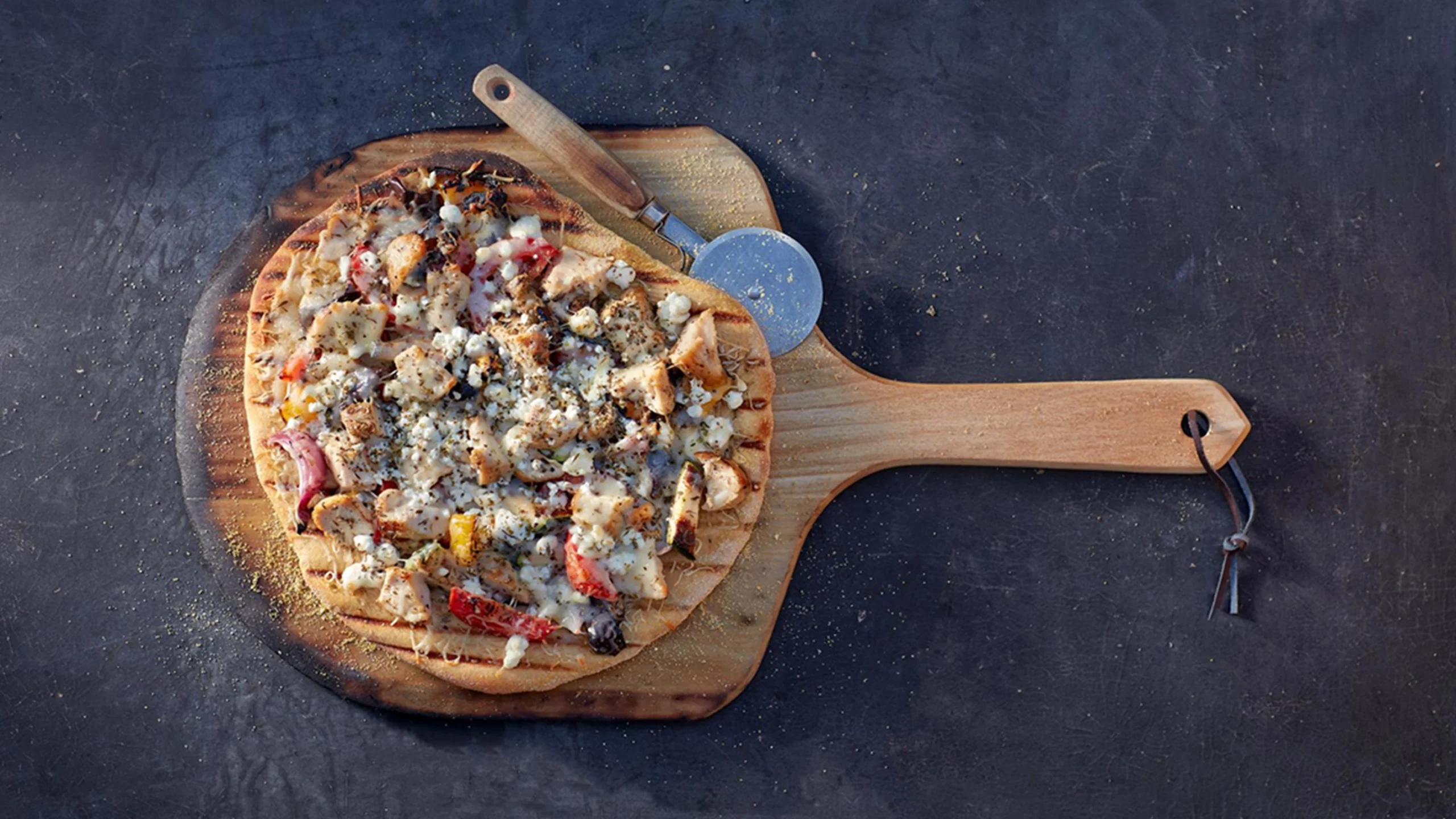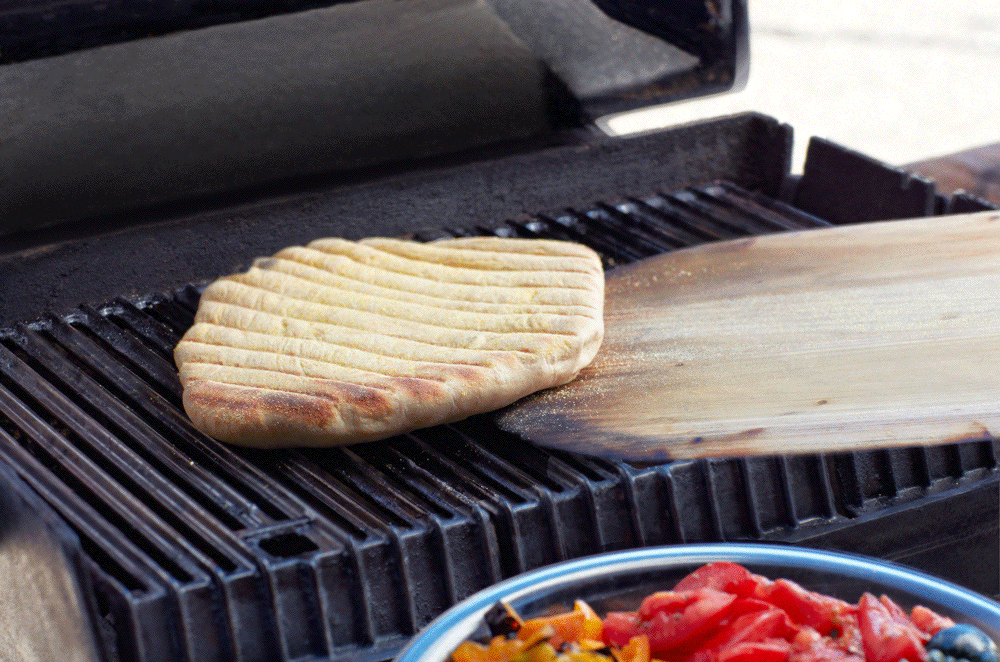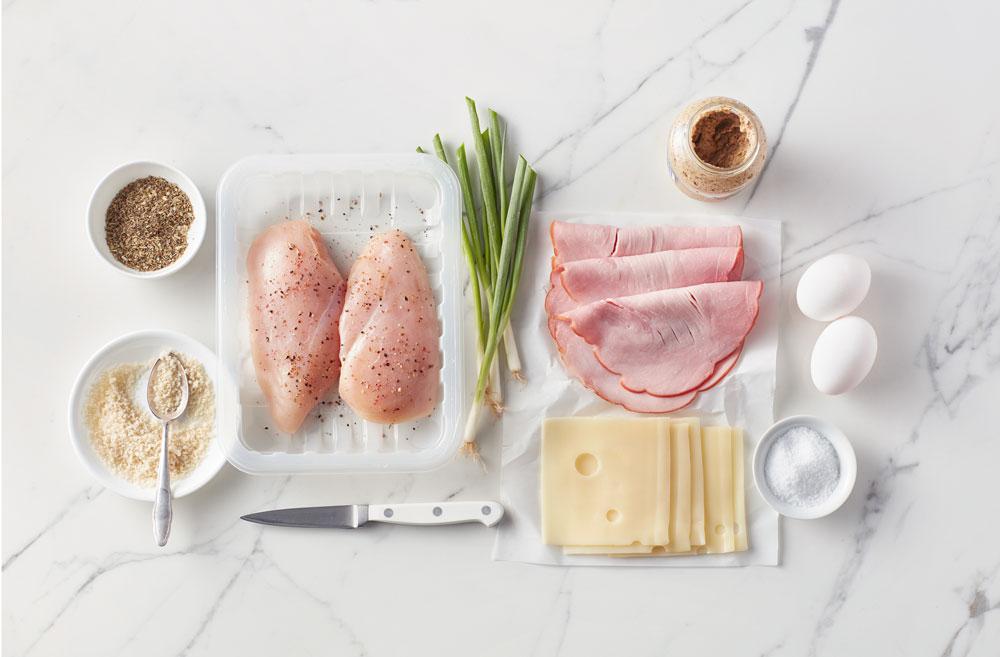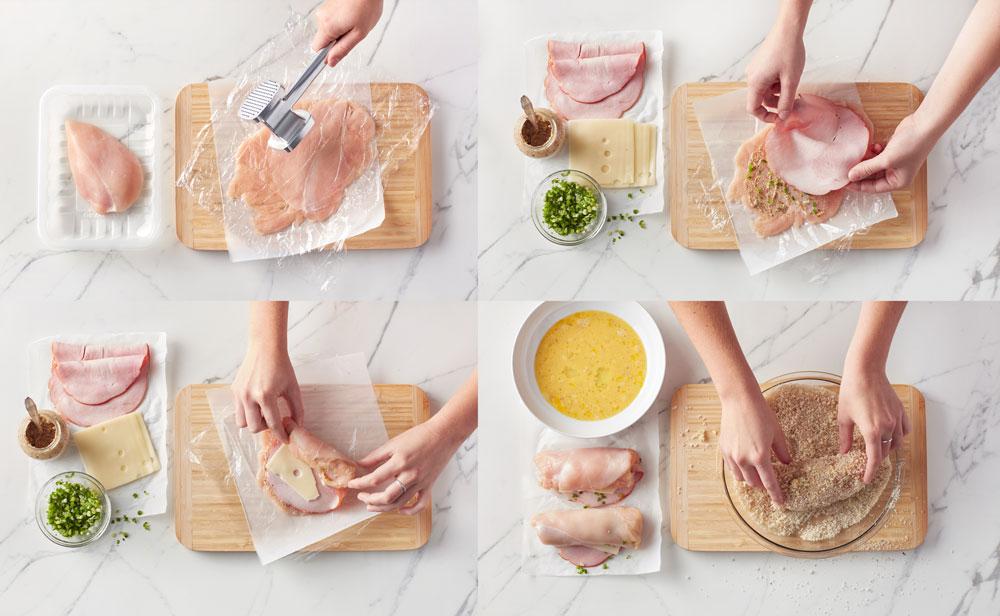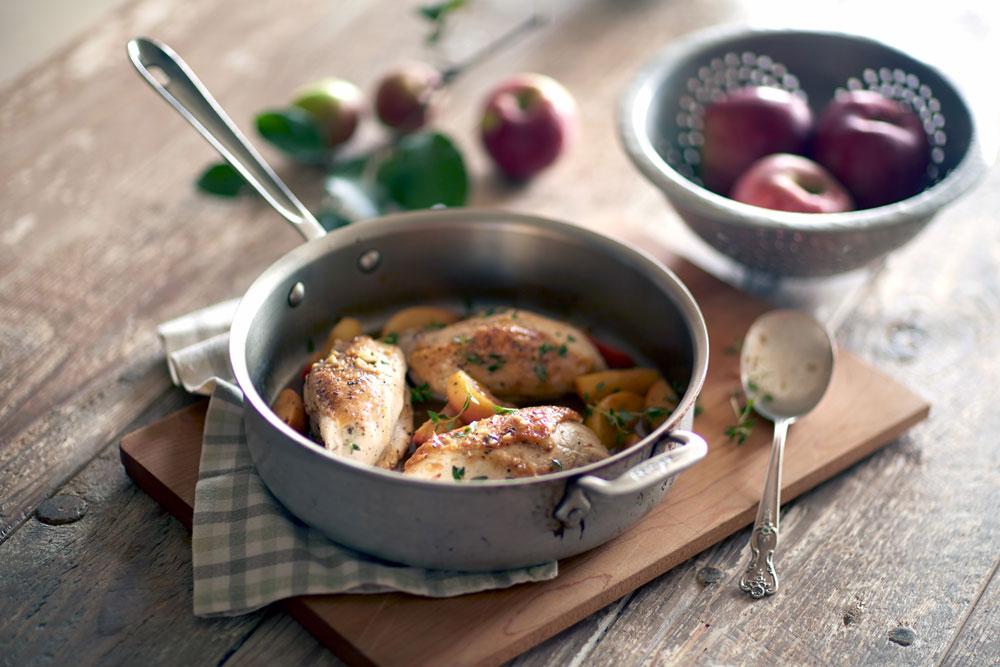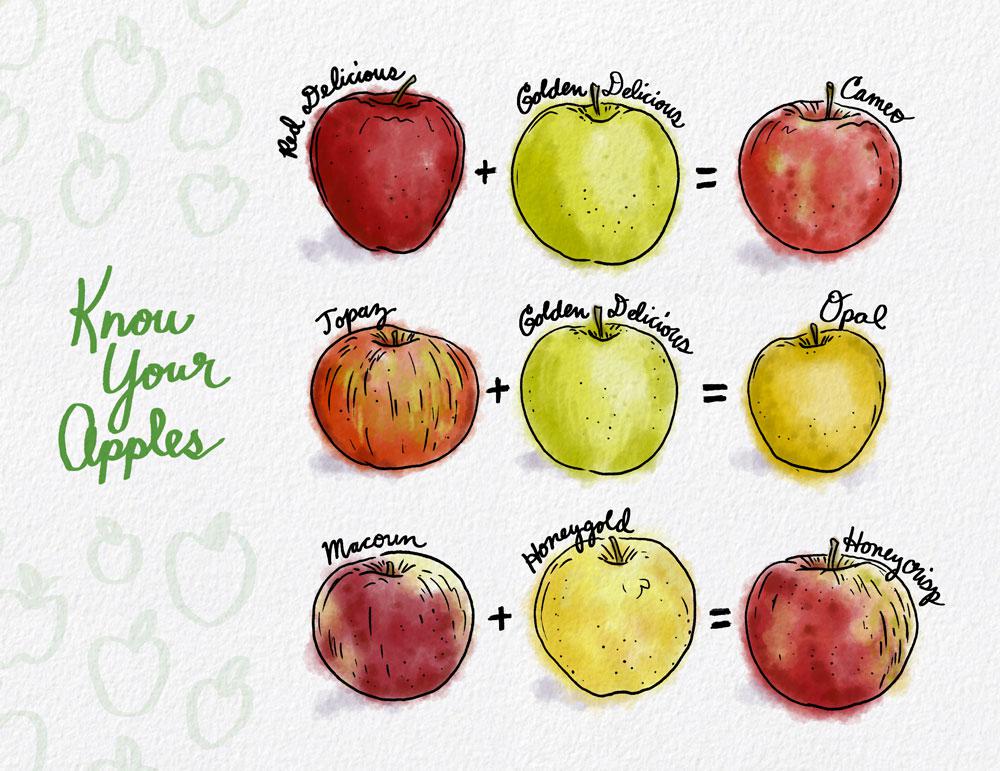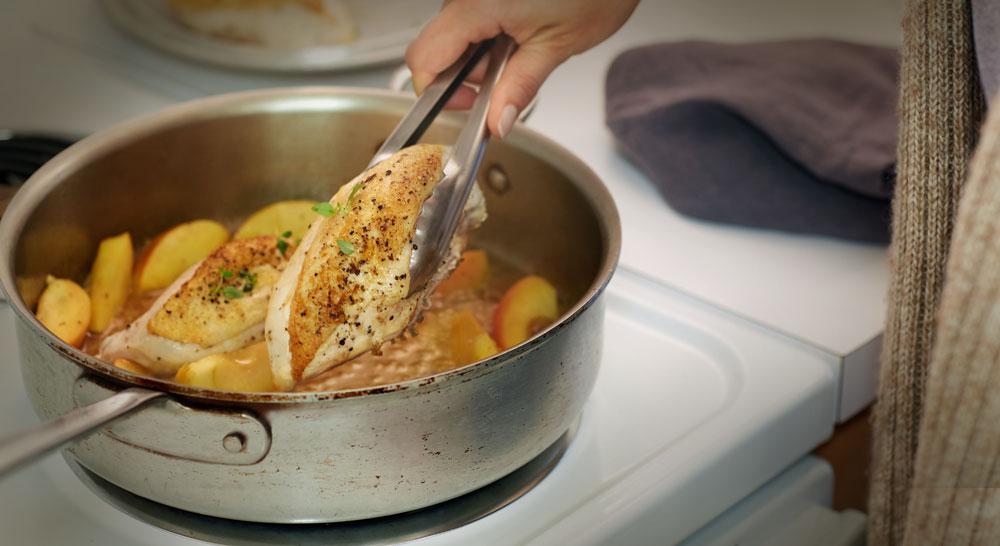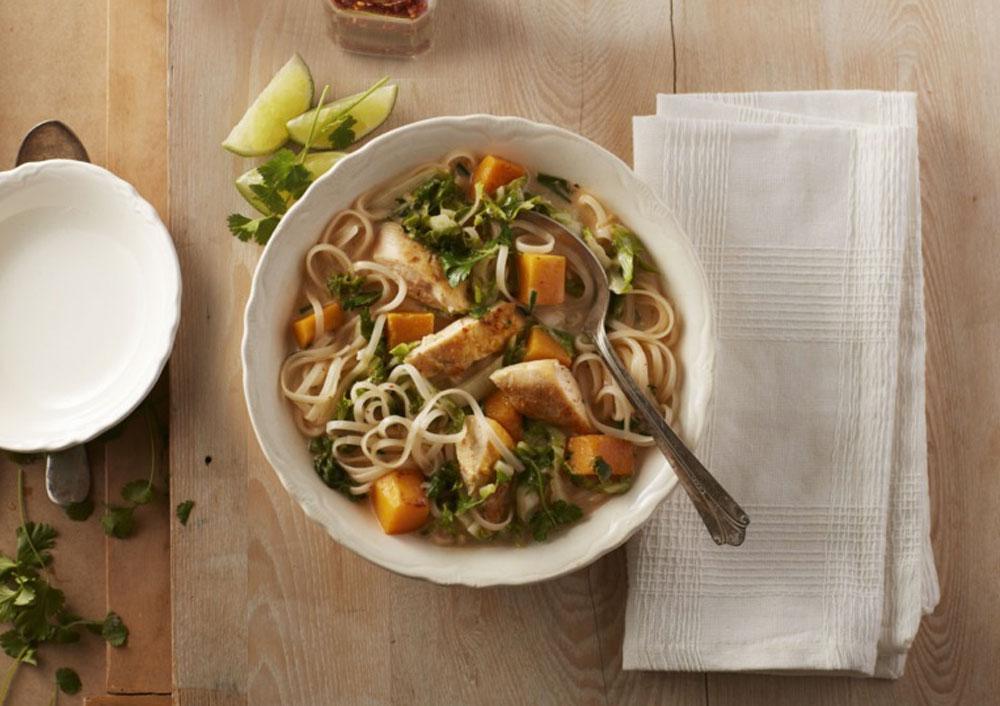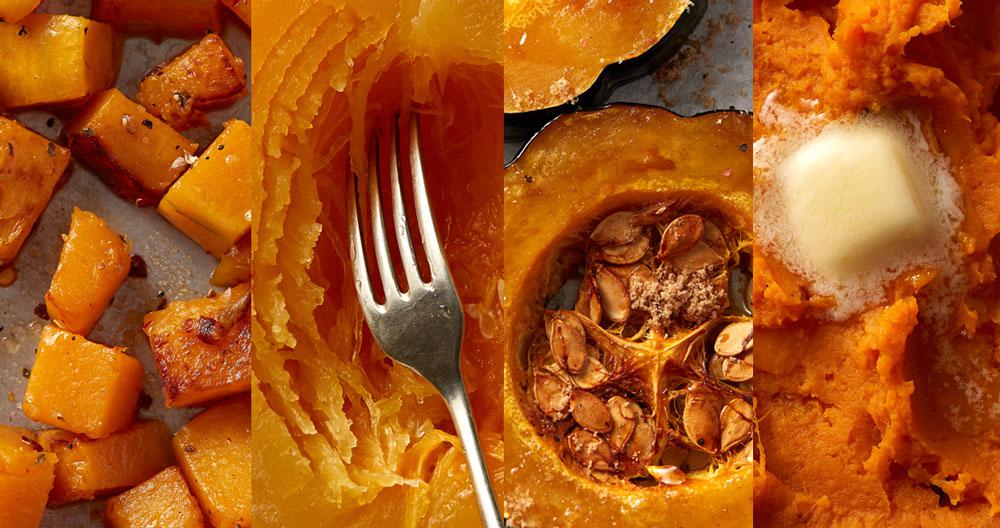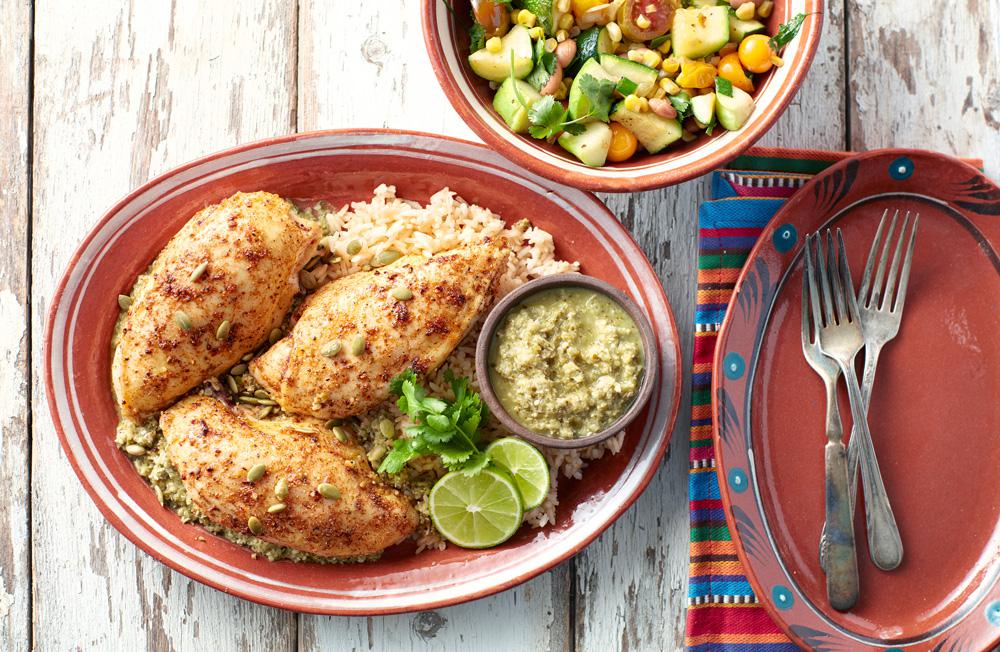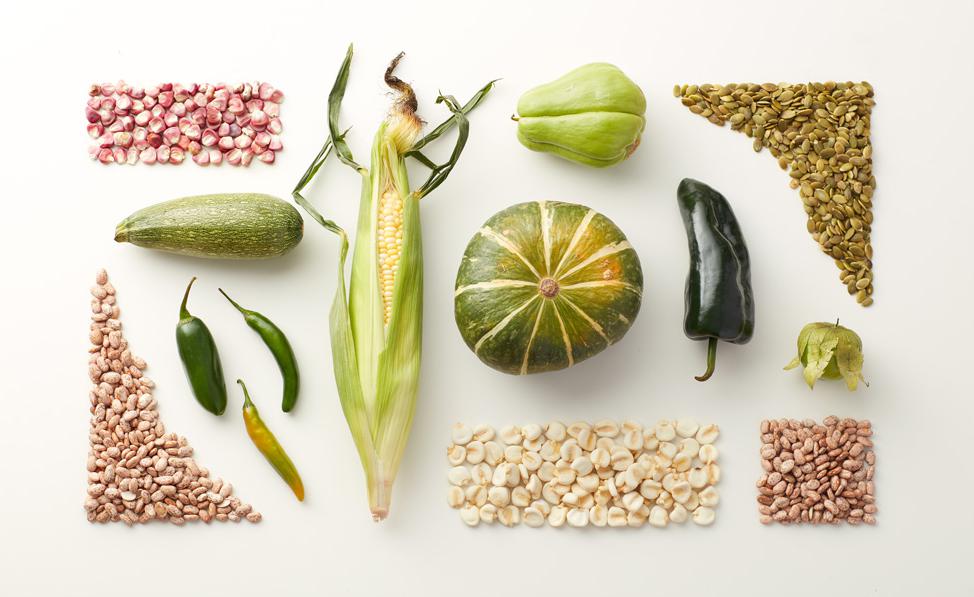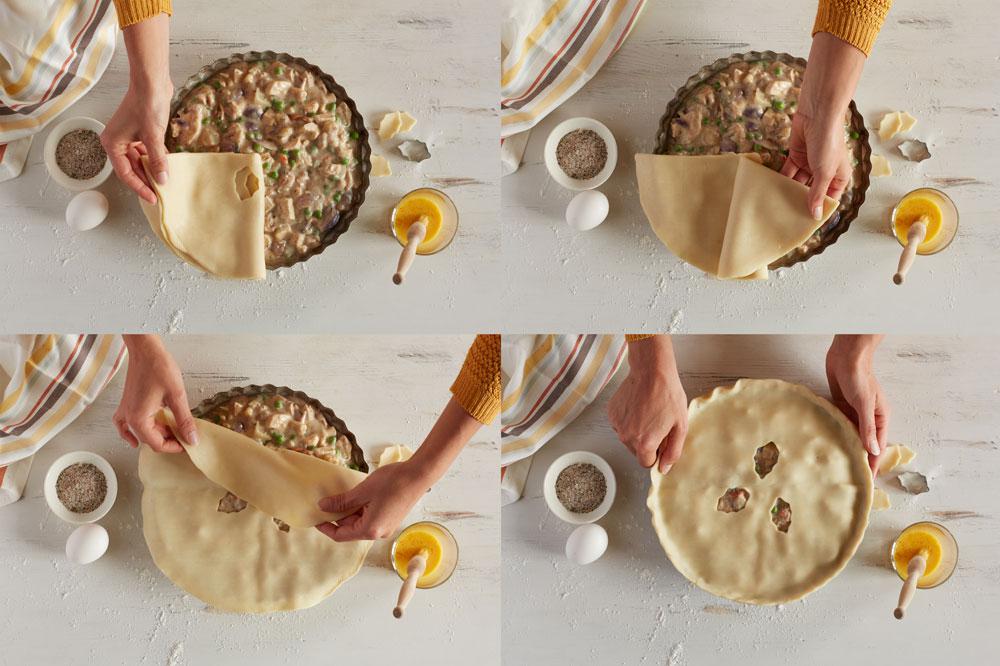Sunshine, fresh air and fragrant smoke.
There’s nothing better than firing up the grill once temperatures climb. Burgers, ribs and hot dogs are American standards, but lean chicken is a happy partner in this annual celebration of al fresco dining, offering a lighter alternative to conventional grill fare. And with increasingly easy access to locally grown produce, it’s a snap to boost the veggie quotient in your summer menus. Here are some savvy ways to boost your grilling IQ. It’s just a short stroll to the patio to master the art of safe, healthy and pleasurable outdoor suppers.
Fail-safe grilling techniques.
Grilling has developed a bit of a reputation with new research about carcinogens forming from meat fat dripping into flames. But you can minimize your risk and enjoy grilled foods by taking a few extra steps before the coals are glowing (or you turn on the gas).
Marinate for protection and flavor: Studies show that marinating meat before popping it on the grill not only bumps up the flavor but also reduces carcinogens, possibly because the marinade creates a barrier between the meat’s protein and the heat of the grill.
A good basic marinade ratio is one part acid (vinegar, citrus juice or yogurt), one part oil and one to two parts aromatics (finely chopped garlic or onion, for instance). Then add salt or soy sauce and herbs, spices and sugar to taste. Chicken needs as little as an hour steeping in the refrigerator or can be prepped well ahead of time. Be sure to reserve some of the fresh marinade separately to brush on after cooking.
Grill just till done: Boneless chicken breasts and thighs, and bone-in pieces are perfectly portioned for direct heat grilling. The key to success is using an instant-read thermometer and paying close attention as the meat sizzles away. Cooking to exact doneness is healthier and keeps the meat moist. For meltingly tender chicken, especially a halved or butterflied whole bird, use indirect heat. This technique essentially turns the grill into a patio oven, cooking chicken covered and away from direct heat might take a little longer, but it eliminates the chances of splattering fat igniting flames from below.
Avoid flare-ups and charring: A spray bottle of water should be part of your outdoor kitchen, at the ready to douse unruly flames. It helps reduce too much blackening on the meat and keeps strong clouds of smoke at a minimum.
Scrub the grill grates: Keep a wire grill brush close by and scrape burned bits of food from the grates before and after cooking.
Be a stickler about cleanliness: Always use a clean plate to transport freshly grilled foods to the table, stopping cross-contamination from uncooked meat in its tracks.
Sizzling better-for-you sides.
It’s possible to cook just about anything on the grill, opening up a world of healthy meals that keep you out of a steamy summer kitchen. Toss chunks of sweet bell peppers, thickly sliced eggplant or zucchini with a generous splash of fruity olive oil. A sprinkle of coarse salt and freshly ground pepper is all they need before joining the party on the grill. Char-grill corn-on-the cob or thick wedges of red onion, then chop them up into smoky relishes spiked with vinegar and honey to top burgers or juicy chicken pieces.
Lower heat around the grill edges are tailor-made for fruit like luscious pineapple or halved ripe peaches, which need only a short burst of heat to caramelize their natural sugars. Or grill-toast a grainy baguette, split lengthwise and slathered with garlic butter, to savor alongside a hearty chicken salad or a grilled ratatouille platter, topped with crumbled feta cheese, a few briny olives or capers and a squeeze of fresh lemon.
DIY seasoning blends: maximizing flavor.
Exotic blends of dry spices and herbs fill shelves in the seasoning aisle, providing instantaneous impact to anything you grill. But many commercial rubs are high in salt and sugar, which is fine in moderation but expensive for what you’re buying. It takes only minutes to roast up your own seasoning blends, hitting all the high notes of tastes you really like. Find a good source for bulk herbs and spices, so you can buy them in small quantities that you know are fresh. Take the time to lightly toast whole spices like cumin, mustard seed or coriander, and grind them in a mortar and pestle or a clean coffee mill.
Create your own secret recipe.
A nice coarse rub, generously applied, will form a savory crust on chicken that helps seal in flavor. If you’re grilling boneless chicken, drizzle the meat with a little oil before massaging on a rub. For skin-on pieces, like bone-in thighs, rub a bit of the seasoning under the skin as well as on top.
The possibilities are endless when planning a backyard repast, so embrace the season and broaden your vision of what’s good for the grill.

